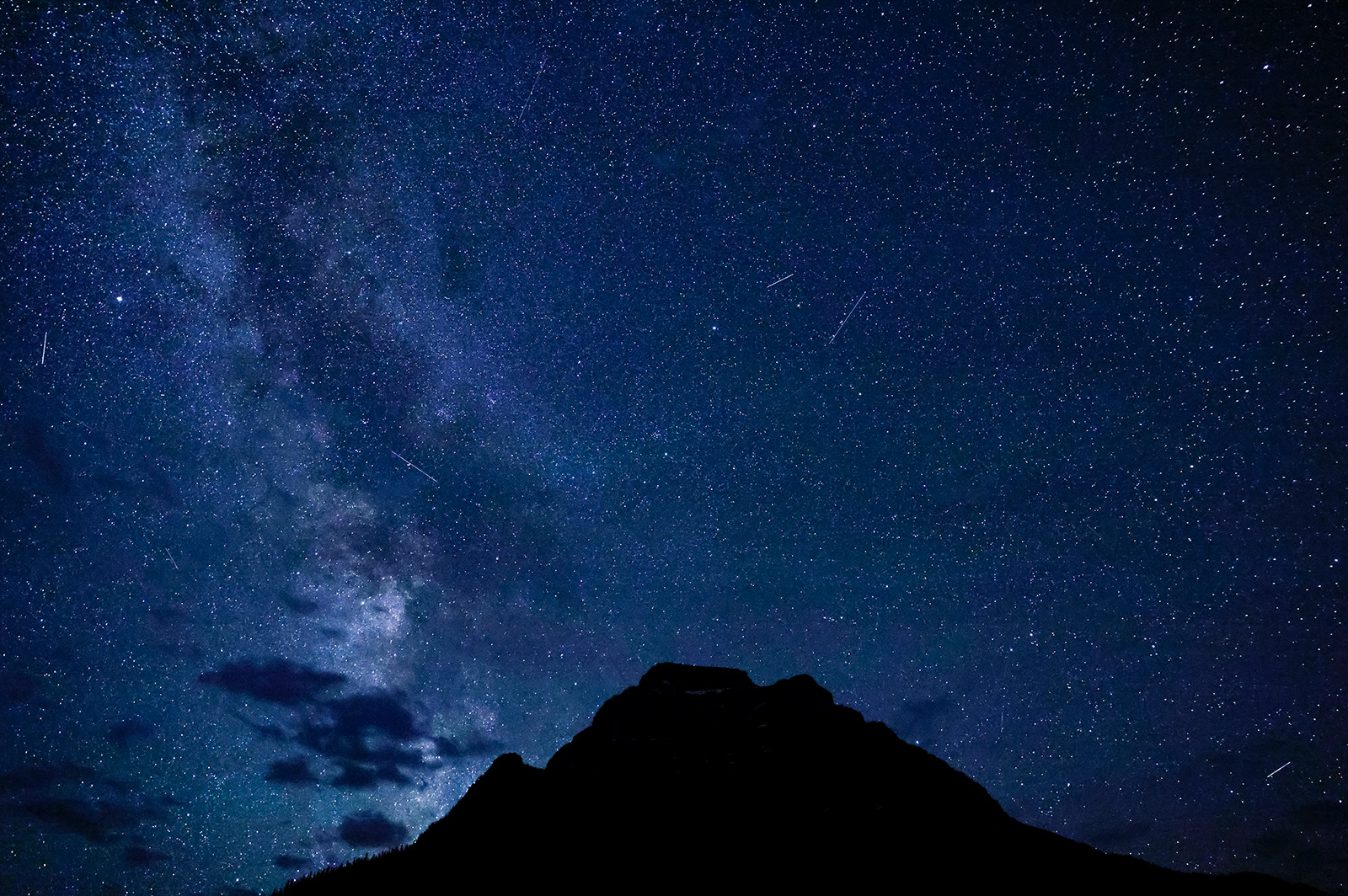Glacier National Park is hosting its first ever Astronomy Week beginning Sept. 3. The four-day event will feature daytime and nighttime activities throughout the park orbiting an array of cosmic themes.
Experts say that roughly 80% of the United States’ population lives in a place where urban light pollution infringes on the dark night sky. Glacier, however, is not one of those places.
In 2021, Waterton Lakes National Park and Glacier National Park achieved full certification as an International Dark Sky Park, joining more than 130 certified International Dark Sky Places around the world. The official designation from the International Dark Sky Association followed more than a decade of work between the two parks and partners like the Glacier National Park Conservancy, which has financially supported Glacier’s night sky education program, and the Big Sky Astronomy Club. Among the features of a dark-sky designated area are more than 2,000 lighting fixtures that are dark sky compliant — they use warmer color lights, are targeted and use shielding, and often have timers or motion detectors.
This makes the interior of Glacier Park among the nation’s top areas for viewing cosmic wonders, whether a rare close encounter with a comet, the annual late-summer Perseids meteor shower or the northern lights.
The 2019 opening of the Dusty Star Observatory at the St. Mary Visitor Center helped bring visitors even closer to the cosmos with its 20-inch Corrected Dall Kirkham telescope.
The programs begin Tuesday, Sept. 3 and run through Friday, Sept. 6, and include daily exhibits and activities at the St. Mary Visitor Center and talks given at St. Mary, Apgar and Many Glacier. A night-sky webcam at the observatory allows anyone to take a look at the star-studded landscape, and each morning a time-lapse video of the previous night is posted online, often capturing meteors and the northern lights.
While Glacier Park hosts astronomy-themed ranger talks and events each year, this is the first time that an entire week is dedicated to space.
All events are free except for the Logan Pass Star Party where tickets are required. Tickets cost $5 per vehicle and go on sale on Thursday at the Apgar and St. Mary Visitor Center bookstores. The following is a snapshot of featured presenters and topics:
Astronomy Week Exhibits
St. Mary Visitor Center
All week, 10 a.m. – 4 p.m.
Stop by the visitor center for a myriad of astronomy-themed activities. Chat with scientists from NASA and the Goddard Space Flight Center, use 3D glasses to “explore” Mars, look at the sun through a solar telescope, make and take a planisphere, participate in an astronomical art project, and look behind the scenes of the Dusty Star Observatory.
Ranger Talk: The Darker Side of Glacier
St. Mary Visitor Center Auditorium
Tuesday, Sept. 3 at 7 p.m.
Rangers will discuss an overlooked resource of Glacier National Park — the dark night skies. Learn to embrace the overwhelming benefits awaiting you in Glacier’s shadows.
Astrophotography Workshops
Apgar Public Boat Dock
Tuesday, Sept. 3 and Wednesday, Sept. 4 at 10 p.m.
Join Glacier’s park astronomer to learn how to take stunning images of the sky above Glacier. A camera and tripod is recommended. Red flashlights or headlamps are recommended for moving about at night. All photographer ability levels are welcome, and don’t forget to dress warmly!
Beyond the Light: The First Two Years with Webb and Other Worlds with Webb
St. Mary Visitor Center Auditorium
Wednesday, Sept. 4 and Thursday, Sept. 5 at 7 p.m.
Dr. Stefanie Milam, a planetary scientist at NASA’s Goddard Space Flight Center will give two different feature talks about her work as the James Webb Space Telescope Project Scientists for Policy and Science Community. In its first two years of work, James Webb Space Telescope has revolutionized the world of astronomy through its incredible sensitivity and resolution. Come explore objects in our solar system, planets around other stars, and some of the earliest galaxies measured to date.

Astronomy Program
St. Mary Visitor Center Auditorium
Wednesday, Sept. 4 and Thursday, Sept. 5 at 10 p.m.
Join our astronomers for a tour of the night sky at the Dusty Star Observatory and learn why protecting dark skies is so important. Offered on clear nights only. Bring a chair and dress warmly. Wheelchair accessible.
Dark Skies and Bats
Many Glacier Hotel Lucerne Room, Many Glacier Valley
Thursday, Sept. 5 at 8 p.m.
Join a Waterton Lakes National Park interpreter for a program on dark skies and bats. Wheelchair accessible.
Logan Pass Star Party
Logan Pass
Friday, Sept. 6 at 9:30 p.m.
Join Park Rangers, volunteer astronomers, and members of the Big Sky Astronomy Club to take advantage of Glacier’s unusually dark skies, gaze through telescopes, and explore the depths of the universe! The event begins at 10 p.m. but all participants must arrive at Logan Pass by 9:30 p.m. when the parking lot will close. The event ends at midnight. Tickets are required and cost $5 per vehicle. Tickets go on sale on Thursday at the Apgar and St. Mary Visitor Center bookstores. Please only purchase a ticket if you are planning on attending, as tickets are limited. This event is weather dependent.
Additional details will be provided with ticket purchase.
